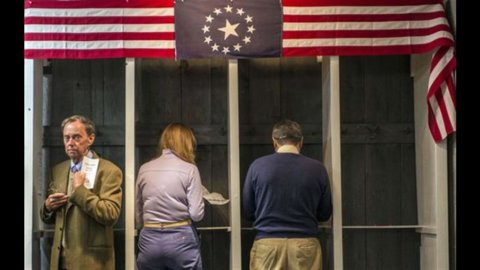Both candidates for the White House have tried to convince voters of the validity of their recipes for accelerating growth and creating new jobs.
After the recession that ended in 2009, the economy is growing at unusual rates for the American giant and unemployment remains unsustainably high, close to 8%. Twenty-three million Americans have no job: they are mostly young people under the age of thirty, who often can only find part-time jobs.
Despite the seriousness of the situation, the recipes of the two candidates seem to be indefinite and unreliable. On the Republican side, the refrain on self-government and the liberation of innate American enterprise converge on proposals for a sharp reduction in public spending, while the progressives do not give up pushing the redistribution button.
In the workplace, regaining the centrality of the past to manufacturing is the real goal to be achieved. Fiscal and energy policies play a primary role in this sense, but the scenarios painted by the two candidates are very distant: Obama has promised the creation of one million new jobs in manufacturing by 2016, plus another 600.000 in shale gas (the extracted from the subsoil). Education also plays a fundamental role, and the tenant of the White House proposes the hiring of XNUMX teachers in scientific disciplines. As for infrastructure, ports, railways and highways will be subject to renewal and modernization, but there is no mention of a real New Deal, but of targeted interventions, financed with savings on military spending.
Romney's plan is much more open-ended: twelve million new jobs by the end of his mandate. On average, as Reuters calculated, 250.000 would be created each month, well above what the economy has done so far. Suffice it to say that in October, in the non-agricultural sector, 171.000 new pay slips were opened, a figure higher than expected by about 50 units.
As for monetary policy, the elections will decide - indirectly - what the future choices of the Federal Reserve will be. Romney has made no secret of wanting to change leadership of the Central Bank, "guilty" of having implemented a "quasi-fiscal" policy by intervening massively and selectively in the purchase of bonds and mortgage-backed-securities to give breath to the real estate sector . For Bernanke, however, the current one will be the last mandate: the Governor has already declared that he is not interested in a second office, but the question is not so much who will lead the Federal Reserve of the future, as the policy line that the board will choose to follow, under the invisible influence of the White House.
The real monster that the outgoing president will have to face, however, will be the deficit. Obama has proposed cutting it by $4.000 trillion over the next ten years, reversing the tax cuts left over from the Bush era by the wealthiest taxpayers. Half of the funds from the return of the military from the Middle East will be donated to reducing the deficit (the other half, as mentioned, will finance infrastructure).
Romney's plan to lower taxes, on the other hand, focuses on drastic cuts in public spending (in particular welfare and health care), to bring the federal budget back below 20% of GDP (it is currently 24%).





